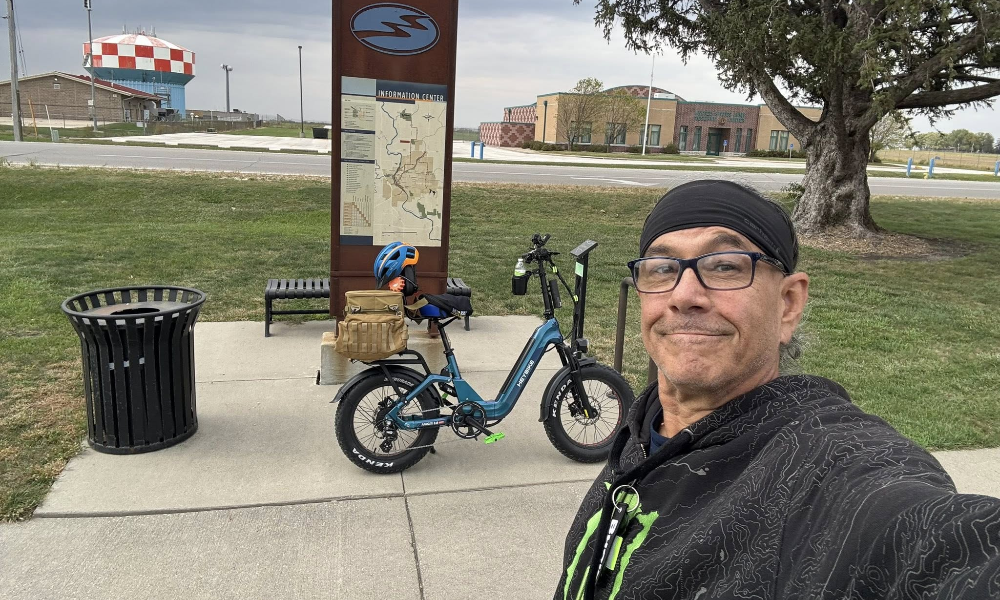One of the most critical rules for caring for your bike is when you should wash it. That can range from frequently with a glossy paint job to every time there is a downpour and mud on your face, but everyone agrees that washing your bike should happen at least once a year. Here is a guide on how to wash an ebike:
When to wash your bike
If you ride on the road and in traffic, it is probably good to wash your bike at least once a week. Road grime eats away at all that luster you have worked so hard to maintain, resulting in a dingy-looking machine-not to mention that dirty bikes can attract the wrong sort of attention from highway cops! Wash your bike after every big ride or if you are riding on filthy roads.
If you ride on rough trails, you will have to wash your bike a lot more often than the average rider. The muck from the trail is a magnet for your bike, and it will get on every nook and cranny. If you are riding off-road regularly, plan on washing your bike once every two weeks.

If you do not ride much, you can give your frame a soapy scrub down at least once a month. The elements can still take their toll even when you do not put many miles in, especially if you park it outside all winter long. Further, the more you ride the bike, the nicer it will look.
If your bike is filthy and you do not have time to wash it, mask off the areas you want to keep clean using masking tape. That can preserve that luster for a few weeks, and it sure beats letting your bike get all grimy looking! After washing your bike, use a clean cloth to wipe gently at any area exposed to grime and ensure it is completely dry before removing the tape.
For areas with more extreme temperatures, then washing your bike more often will help prevent the paint from cracking or fading due to the temperature change between winter and summer.
If you live in an area with little to no rainfall, cleaning your bike frequently will help prevent dirt build-up on your wheels and other parts of your bike. That might be a huge problem if you have a glossy paint job, as dirt can stain and etch into the paint job.
Tools needed for washing a bike
Take the following items with you when washing your bike:
- Plastic container with a leakproof lid to put water in when you start. That can be a large bowl or even a 55-gallon drum depending on your family's needs! You can also put soap and detergent in water if you do not want chemicals.
- A small container to put the used soap/detergent water in.
- A soft brush to scrub your bike with.
- Brushes and sponges to clean the harder-to-reach areas of your bike.
- Rags to wipe up any excess water or dirt you may have missed while cleaning your bike.
- A sturdy hose with a good spray nozzle so you can rinse off the soap and dirt after washing it.
- Protect your bike when you are not working on it with a good cover.
- A drain pan to catch any excess water that can tip or run off of your bike.
- A roll of paper towels, or several, so you do not have to waste water rinsing your bike off after you have cleaned it.
- Lubricant for all of the moving parts on your bike, such as bearings and chains. You can use WD-40 for this task.
- Crevice tool for getting into the harder-to-reach areas of your bike like under the seat or on the handlebars.
- Soft cloths for wiping off the bike after you have cleaned it.
- A rubber brush for cleaning your bike's wheels. You can use old toothbrush bristles from a toothbrush to make these. That will help if you have been riding through lots of dirt, sand, or fallen leaves.
- Dishwashing soap and a scrub brush to clean your bike.
- A roll of paper towels for drying off the bike. You can also use a fan to blow on the bike to speed up the drying process.
- WD-40 or any other lubricant for all moving parts on your bike, like chains and bearings.
- Protecting clothes to cover your bike while it is in storage.
- A cover to keep your bike protected when you are not riding it so you can prolong its life and increase its value when you decide to sell it later on down the road.
Step by step guide on how to wash a dirt bike
Avoid concrete if possible because it may damage certain parts of your bike. Find a drainage location next to the house or in the garage. You can use a large bucket, garden hose, or sprinklers for this step, but ensure that the water is higher than your bike level so it does not touch any sensitive areas and corrosion can occur.
The next step on how to wash a bike, is removing any large items that might get in your way. The saddle, water bottle cages, and reflectors are usually simple enough to remove with a screwdriver or hex wrench.
Before washing your bike, double-check that it is cool enough outside and preferably dry too. Wash from top-to-bottom, so grit does not fall back onto wet parts of your frame when they are drying out.
Second, give your bike a good wipe down to eliminate any loose dirt or mud. If you have one, you can use a dry rag or a proper bike cleaning kit if you have one, be sure the rag is clean and not covered in oil or anything else that might damage your paint job.
If you have a helmet and think it is clean enough, put it under cold water for 5 minutes to wash off any bugs or other nasties that might be living there.
You can start hosing off any more significant bits like the fork, wheels, and brakes. Use a hose with cold water to avoid damage to the paint and iron out any watermarks from your muddy shoes.
Be careful when washing drive components. Rubber seals are easy to damage when wet and do not dry out as easily as metal ones (think wheel bearings). Ensure you have a clean piece of old rags or old socks handy, just in case.
After that, it is best to wait until everything is dry again before reassembling the parts on your bike. That will ensure less chance of getting dirt trapped under parts that might not have been cleaned properly.
If you have got mud on the frame, you can use a rag to remove it with a bit of detergent and water gently. A soft toothbrush can also be handy for hard-to-reach spots like the underside of your saddle.
After washing your bike, ensure it is completely dry before applying any lubricants or other products. If necessary, use a clean piece of an old towel or clothing to dry out areas like the brakes, bottom bracket, and chainstay junctions that do not get as much airflow.
Do's and Dont's when washing a bike
Do's
- Do ensure that your tires are deflated when washing them. You can put them in a tub or bucket of water for about an hour. That reduces damage from water and soap getting stuck inside the wheels.
- Do ensure that you air out the wheels before you re-inflate them. That is done to prevent flat spots from developing on the tires or possible tire failure due to trapped air pressure.
- Do try to keep water and soap off of the bearings as possible. Water and soap will cause rust, affecting how well your wheels spin.
- Apply a lubricant to clean your chain, gears, and other metal components. They are not too sensitive to water, but they will last longer with a lubricant or WD-40 applied before washing.
- Do use a bicycle brush or rag to help prevent scratching of the metal parts on your bike: The rims should be brushed lightly, and be careful with brake pads, the chain, derailleur pulleys, and gears.
- Do give your bike time to dry out before you put it in the case. Generally, it is advisable to leave them out for about 2 -3 days, though if you can, you should let them sit for about a week before putting them away.
- Do remove all of the components from the bike that may get wet. These include the pedals and crank arms for most bikes.
Dont's
- Do not forget about your S-bend and quick-release levers if you ride with disc brakes: These bits are not very waterproof after washing, so be sure to follow up with some lube or grease!
- Do not forget your bike's cables and inner workings (for example, the derailleurs): If water gets inside the cable housing, it can cause rust and possible failure.
- Do not be lazy about your bike when washing it. Keep the wheels off and thoroughly clean the frame: Use a brush or rag to get into the nooks and crannies so that you do not have rust building up there suddenly. Lern more tips on our blog 'Tips for Removing Rust from e-Bikes'
- Do not try to clean your bike in cold or warm water, as these temperatures may warp your rims or cause rust. If you must use warm water, give the frame a quick rinse with a hose before getting on with other tasks, so you do not scald yourself with hot water.
- Do not leave any burrs, sharp parts, or handles on your bike after washing. It could cause a scratch or cut while riding.
- Do not ignore your bike during washing. Do not let the water flow over it without cleaning anything!
- Do not forget to air out your rims and tires: Blowouts and excess pressure will help prevent flat-spotting on the rim/tire.
- Avoid using hot water, since it might warp the aluminum rims and ruin the paint on the frame. If you have to use a hose, bathe your bike with the spray set to low pressure.
Conclusion
Many people think they need to wash their bike after every ride, but the reality is that you can get away with washing it once or twice a month. To be safe, clean all parts thoroughly with a cloth and cleaning solution, remove any excess grease by rubbing it onto a rag, and then scrubbing. Rinse the bike with soap and water while holding it vertical on a rinse station (not in your sink), dry it off afterward, and store it when thoroughly dried.
Latest Stories
3000 Miles of Pure Joy: Greg’s Story with the Heybike ALPHA | Heybike Community
At 68, Greg conquered 3000 miles on his Heybike ALPHA ebike through Minnesota's trails. Every ride brought him fun, fitness, and freedom!
Freedom on Two Wheels: Ryan's Thrilling Rides on Mars 3.0 | Heybike Community
Ryan Davis shares his riding story on Heybike Mars 3.0 ebike. Have a look at his all-terrain adventures to see how the Mars 3.0 brings him true freedom.
From Walker to Rider: Darrel Rediscovering Youth and Joy on Ranger 3.0 Pro | Heybike Community
At 59, Darrel Abbe found youth and joy again riding the Heybike Ranger 3.0 Pro electric bike with his wife. Explore their story and the thrill of e-biking.



Share:
Benefits of Men Riding Bikes
Mid Drive Vs. Hub Drive Ebikes